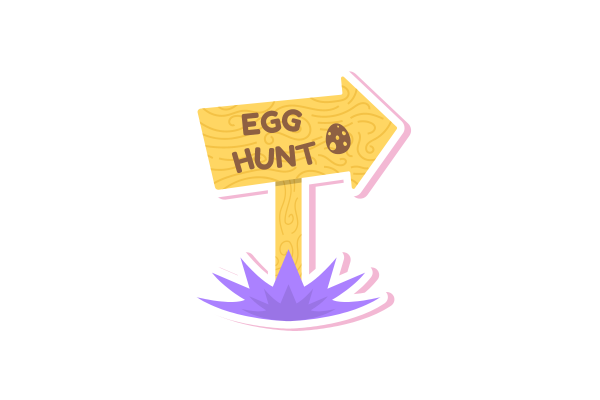6 Ways to Make Easter Egg Hunts Accessible for All
Traditions and special days like Easter and Christmas create lovely family memories. But with tradition can also come a notion of being ‘stuck in your ways’. It’s important for everyone, especially children, that we ensure that they can participate fully in every aspect of what it happening so we might need to adapt some activities for inclusivity. With Easter fast approaching, we look at one of the day’s favourite activities.
Easter egg hunts are great fun. And while the chocolate is delicious, the joy is always in the finding and counting your bounty. No child should miss out on this fun, so here are some ways to adapt egg hunting so children who are blind or have low vision can participate.
Beeping Easter eggs
Beeping Easter eggs are specially designed for children with vision impairment. Children follow the sound of the beep to find the eggs. They can be found at Amazon, Maxiaids.
Talking Easter eggs
JoJo and Friends electronic Talking Hide ‘Em and Find ‘Em Easter eggs are electronic eggs that take the sound following to the next level. They talk to you while you hunt them. Inside is an additional surprise! They are available from Amazon.
Tie a balloon around the Easter eggs
Need something simpler, or have a child with sensory sound concerns. Tie helium filled balloons around the Easter eggs. Simply attach a balloon (wide ribbon works well) to each Easter egg. For most children, the best height is for the balloon to be eye-level. Low vision students can easily spot the balloon. Blind students can locate the ribbon using their cane (or arm).
Stick the Easter eggs on a wall
Using BluTack place the plastic eggs on a wall at a good height for the children to search for. For each plastic egg found the children collect a real egg. You might also like to use real easter eggs that are not too heavy and will stick to the wall without falling off.
Glow in the dark Easter egg hunt
You can have the Easter egg hunt in a darkened room, an empty garage or at night. The bright Easter eggs can ‘glow’ for children with low vision and children with CVI just by adding LED tealight candles (available at most stores) or small glow sticks placed inside or next to your plastic Easter eggs!
Wireless Key and Object Finder for Easter egg hunt
Use 3 beeping flat key fobs (receivers) that are activated from the base unit. Each tile can be placed in a plastic Easter egg and will still be heard! These are a great alternative to the beeping eggs, especially if you already have a beeping key fob. Plus, they have 10-15 metres range. The home base has a button for each fob, making it easy for the adult (or child) to press a button and follow the beeps to that specific receiver/egg and do one at a time. Available from Smartrspace.
Happy hunting everyone.


